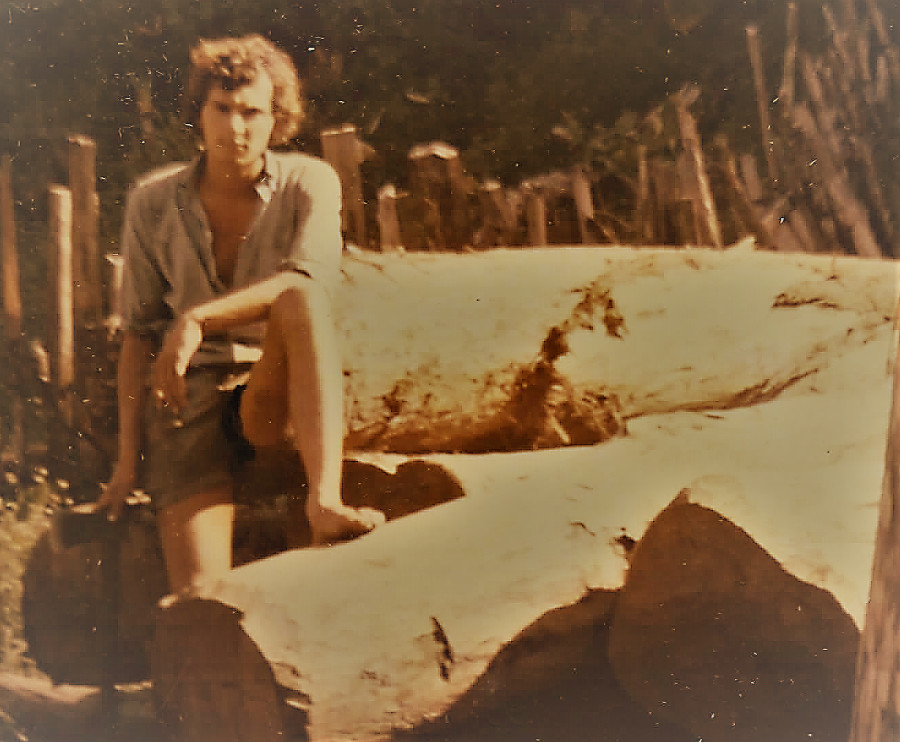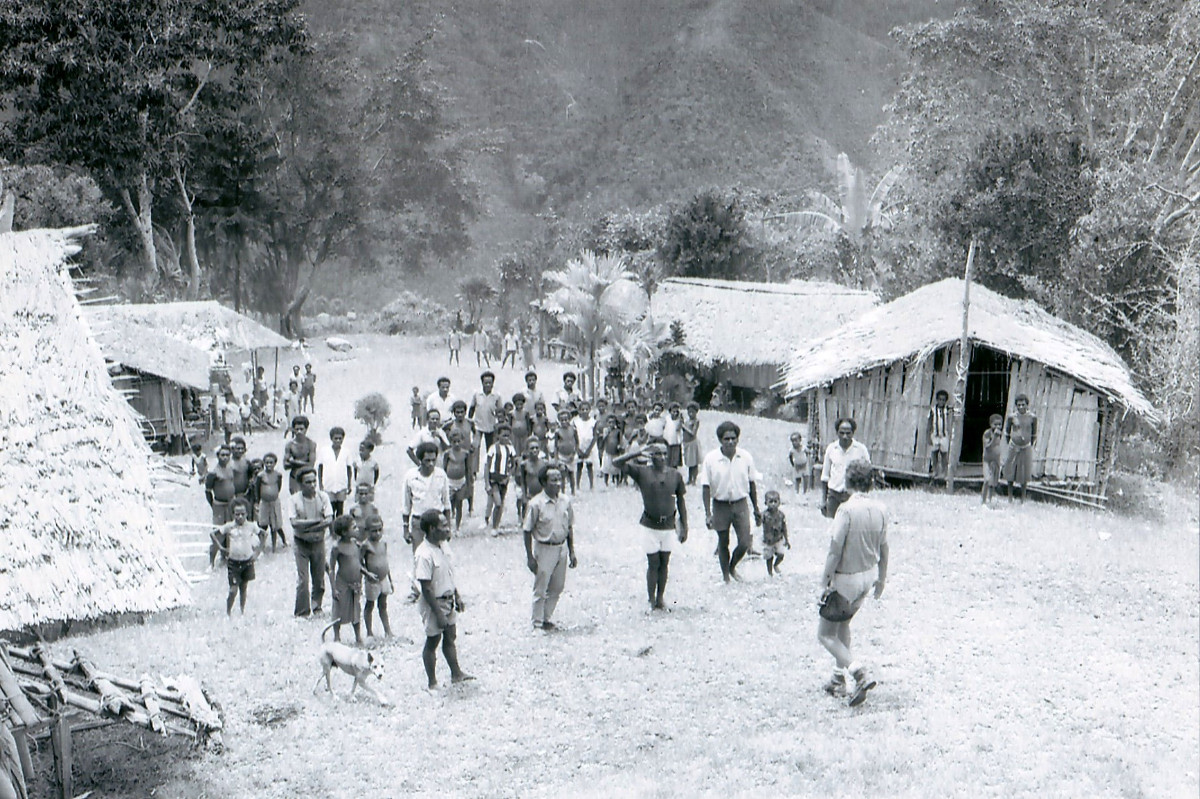The Northumbrian Kiap
by Robert Forster
A vivid first-hand account of never-to-be-repeated postings in pre-independence Papua New Guinea by a British-born kiap (bush administrator)
The Northumbrian Kiap: An unusually angled tale of ethnicity, isolation, identity, political ambition, historical record and administrative confusion during a remarkable period of late Twentieth Century history
I was a student in the 1960s. Little different from many others. Played rugby, drank beer, wore shoulder length hair, often danced until my feet were sore and edited Aston University’s newspaper too.
Each of these was more important than my studies so in April 1968 I dropped out.
A broadsheet editor warned me I was not yet ready for newsroom work so I left Britain and signed up to manage a remote sawmill at Binaru deep in Papua New Guinea.
It was a hundred year step back in time. To sub-Saharan Africa in the mid-1800s perhaps?
I lived and worked with a group of Gende people for 18 months. They taught me near perfect Melanesian Pidgin and impeccable village manners.
On the back of this I was recruited by the Australian Department of External Territories and began work as a kiap or bush administrator.
The Aussies were benevolent colonialists and my brief was beyond strange because it mixed many contradictory tasks including urgent political education and the suppression of persistent inter-clan fighting.
I married Paula too. She was innovative, tough, and stuck with me until she put her foot down in 1975 and we returned to the UK.
In 1977, when I sat down to record all that had happened, my immediate overview was that I’d been able to enjoy a remarkable adventure.
Forty years later, when I began to polish the dusty original text, I realised my narrative’s unquestionable lead players were the astonishing people of Papua New Guinea and I had, unknown to younger myself, already acknowledged this by naming more than ninety individuals.
They had faced up to tumultuous, near constant, cultural adjustment from the moment white explorers began to move through their territory during the mid-1800s – some not arriving, along with the confusions they trailed, until 1950 or beyond.
These challenges intensified over the 1960s-70s when complications raised by imminent self-government and independence reared up to confront them as well.
My account is candid, objective, and empathetic. It includes eye-witness observations on the country’s uniquely formidable interior, descriptions of arrow and spear fuelled traditional fighting, and endlessly damaging cyclical pay-back murder.
But also outlines the profound social and political stresses provoked by rejection of kiap government directed through Australia. These include the installation of an illiterate Minister of Communications, threats to murder European planters, a stubborn Assistant District Commissioner blind to the implications of a seismic general election, and a group of Europeans skulking behind an arsenal of firearms on Self-Government Day.
PNG’s exploration, and early administration, by kiaps has been comprehensively covered but “The Northumbrian Kiap” offers valuable insight into problems faced by both village people and their civil service during the much less well documented count down to independence in 1975.
A surprising undertext is the unmistakable similarity between adjustments to accommodate mid-20th Century lifestyle changes forced on village people in rural Northumberland and contemporary reaction among Papua New Guineans as they too faced up to tensions created by universal, unrelenting, global economic and educational advancement.
A Tale of Two Pictures
This was taken at Binaru in late 1968 just three months after leaving the UK. The photographer, an apprehensive Otto Dirumbi, was holding a camera for the first time. He, and others in the labour line, taught me fluent Pidgin English as well as how to call on village people in their homes without generating unnecessary excitement or fuss.
Just six years later that hesitant youth has become a confident kiap – not at all nervous about walking into one of PNG’s most isolated mountain villages and quite ready to hoist its new national flag for the first time.
A message to Papua New Guineans in Tok-Pisin
Sore tasol longpela taim nau mi no firapim tokpisin bilong mi na mi tingim em i klostu long dai finis. Taim mi lusim PNG long 1975 pisin bilong mi gutpela tumas na sapos mi kirap long wanpela ples taim mi wok insaet patrol bilong gavman numbawan tingting bilong mi taim kokaruk i singout, na mi opim ai bilong mi, alosem “Orait, nau bai mi mekim wonem?” No gat tok-inglis.Tok-pisin tasol
Nau mi lapun pinis mi laikim yupela harim stori bilong mi long taim mi sindaun namel long yupela na wok bilong mi insaet long banis gavman. Antap long em mi laikim yupela harim stori long bus-skul bilong mi long Binaru klostu long Bundi long hap Madang.
Ass ples bilong mi Northumberland. Nau mi sindaun insaet long em klostu long matmat bilong tumbuna bilong mi na klostu tu long pikaninni bilong pikannini bilong mi. No gat wok nau, mi sindaun nating, olsem mi laik raitim dispela stori.
Lain bilong mi long Binaru bin skulim mi gut long tok pisin na pesim bilong yupela olsem taim mi kirapim wok kiap bilong mi – enap mi ken go insaet long haus bilong bikman bilong ples, sindaun klostu long paia, na mitupela ken kirapim gutela toktok. Em gutpela tasol em i halpim wok bilong mi na halpim ol tu long ples bilong ol iet. Olsem sompela taim tupela kain tingting i ken sindaun wantaim.
Insaet long buk ia, “The Northumbrian Kiap”, mi tok stret long tingting bilong mi, na wok bilong mi, olsem klostu long 50 yia i go finis. Nau yupela ken kesim save long tingting bilong wanpela kiap iet long taim bilong self-gavman na klostu long yupela bin kisim independence bilong yu.
Laik bilong mi alsem yupela traim buk ia na sapos yu laikimim yu ken toksave long wanwok na wantok bilong yu na i ken baim buk ia tu. Sore mi tingting planti long yupela nau.


